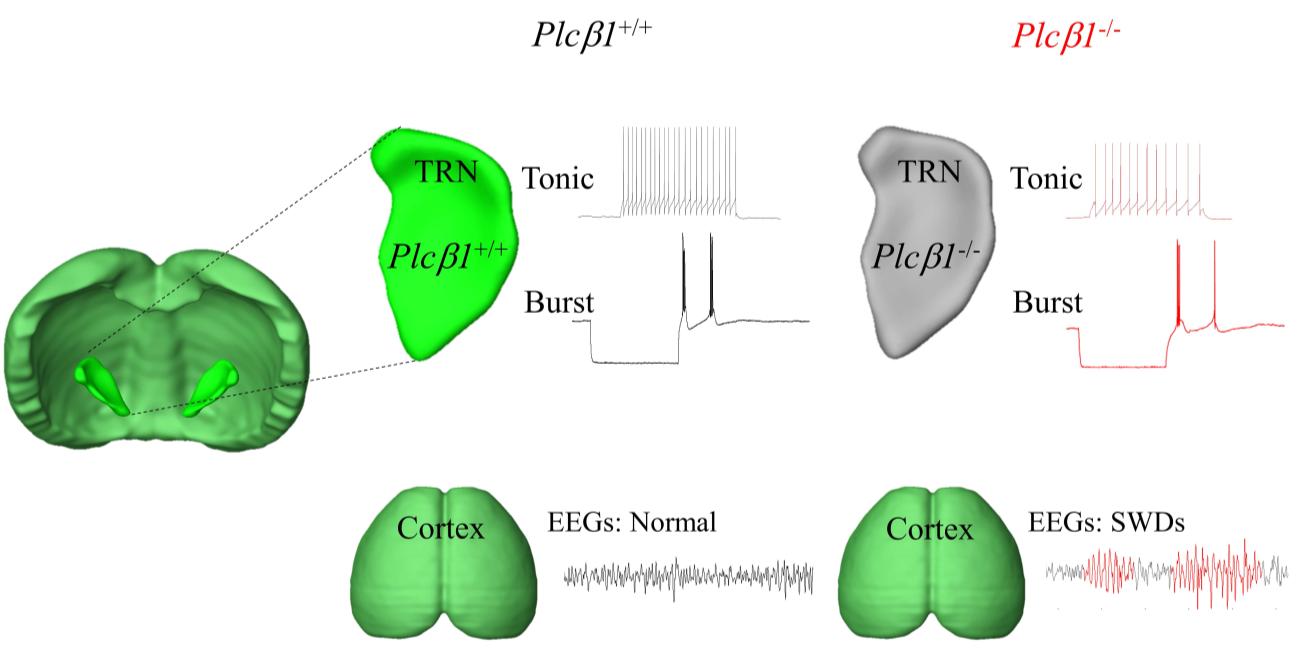Articles
Article Tools
Supplementary
Stats or Metrics
Article
Original Article
Exp Neurobiol 2022; 31(2): 116-130
Published online April 30, 2022
https://doi.org/10.5607/en22007
© The Korean Society for Brain and Neural Sciences
Deletion of Phospholipase C β1 in the Thalamic Reticular Nucleus Induces Absence Seizures
Bomi Chang1,2,3, Junweon Byun1, Ko Keun Kim1, Seung Eun Lee2, Boyoung Lee1, Key-Sun Kim2, Hoon Ryu2, Hee-Sup Shin1* and Eunji Cheong3*
1Center for Cognition and Sociality, Institute for Basic Science, Daejeon 34126, 2Brain Science Institute, Korea Institute of Science and Technology, Seoul 02792, 3Department of Biotechnology, College of Life Science and Biotechnology, Yonsei University, Seoul 03722, Korea
Correspondence to: *To whom correspondence should be addressed.
Eunji Cheong, TEL: 82-2-2123-5885, FAX: 82-2-362-7265
e-mail: eunjicheong@yonsei.ac.kr
Hee-Sup Shin, TEL: 82-42-878-9155, FAX: 82-42-878-9151
e-mail: shin@ibs.re.kr
This is an Open Access article distributed under the terms of the Creative Commons Attribution Non-Commercial License (http://creativecommons.org/licenses/by-nc/4.0) which permits unrestricted non-commercial use, distribution, and reproduction in any medium, provided the original work is properly cited.
Abstract
Absence seizures are caused by abnormal synchronized oscillations in the thalamocortical (TC) circuit, which result in widespread spike-and-wave discharges (SWDs) on electroencephalography (EEG) as well as impairment of consciousness. Thalamic reticular nucleus (TRN) and TC neurons are known to interact dynamically to generate TC circuitry oscillations during SWDs. Clinical studies have suggested the association of
Graphical Abstract

Keywords: Thalamocortical neuronal system, Absence seizure, Spike and wave discharges, Thalamic reticular nucleus,


